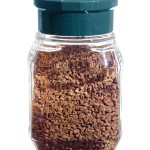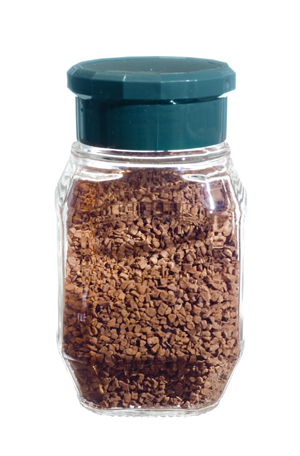Survival School – Food Storage and Safety
Summary
 Whether zombies are knocking on your door, or a natural disaster forces you to evacuate, there are a few vital skills everyone should know in order to keep your family safe.
Whether zombies are knocking on your door, or a natural disaster forces you to evacuate, there are a few vital skills everyone should know in order to keep your family safe.
Food storage is a huge concern in any disaster. More often than not, families are caught completely unprepared and are forced out of their homes with merely a day’s supply of food, or less. Yes, food is heavy, but it is vital. Below are some tips and tricks to help you prepare appropriate foods to keep your family safe in any disaster, from floods to the Zombiepocalypse.
From behind the zombie bunny cages of RC Murphy:

© Photographer: Budda | Agency: Dreamstime.com
Food storage is a huge concern in any disaster. More often than not, families are caught completely unprepared and are forced out of their homes with merely a day’s supply of food, or less. Yes, food is heavy, but it is vital. Below are some tips and tricks to help you prepare appropriate foods to keep your family safe in any disaster, from floods to the Zombiepocalypse.
FEMA and the Red Cross suggest storing foods that are high in calories and nutrition, require no refrigeration, water to cook, or special cooking techniques in case of emergency. They also said to take into account your family’s nutritional needs and tastes. Familiar or comfort foods will make a tough situation, as in a disaster, easier on everyone.
Storage:
-
Ensure boxes and resealable packages are kept sealed tight. Repack items in zip-top bags to keep pests out and preserve freshness if original packaging is damaged.
-
Store dry goods such as sugar, flour, nuts, and dried fruit in screw-top jars or airtight containers.
-
Throw away canned goods that are swollen, dented, corroded, or rusting.
-
Store non-perishable items in a large plastic tote, along with cooking/eating utensils, a manual can opener, a large pot with lid, and waterproof matches.
-
Do not forget non-perishable food for your pets.
Viability:
-
Use these foods within six months- Boxed Powdered Milk, Dried Fruit, crisp crackers, potatoes (stored in a cool, dry place).
-
Use within a year – Condensed canned meat and vegetable soups, canned fruit, canned fruit juices, canned vegetables, ready-to-eat cereal and oatmeal, peanut butter, jelly, hard candy and canned nuts, vitamin supplements.
-
Indefinite storage (in proper containers/conditions)- Wheat, Vegetable oil, dried corn, baking powder, soybeans, instant coffee, tea, cocoa, salt, non-carbonated soft drinks, white rice, bouillon cubes, dry pasta.
-
Canned foods can be eaten out of the can- remove the label and open the can before heating. This saves on dishes, or allows you to have a warm meal, despite a lack of pots and pans. Place a few medium-sized rocks around the can on top of some coals. The rocks will hold it in place.
-
Boil non-store bought water for 5 minutes before adding food to cook. This ensures any and all bacteria in the water are killed and don’t latch onto the food, making you sick.
-
Cook all foods thoroughly, especially meat if you plan on hunting to feed your camp. Storing meat is not ideal in a disaster situation. Cook everything you have and let it cool before storing it in plastic bags in your ice chest to prevent possible cross-contamination from raw meat in the ice chest. The meat must be eaten within hours** unless you find a way to make jerky out of it or a magical way to consistently keep it under 38* Fahrenheit***. Beans and grains are excellent sources of protein that don’t require refrigeration.
-
**Hot or cold food left at room temperature for more than 2 hours (or 1 hour if the outdoor temperature is above 90°) should be discarded.
-
***According to the USDA FSIS, cooked meat can be refrigerated safely for 3-4 days. For storage longer than four days, cooked meat should be frozen.
Cooking:
Preparation:
-
To prepare for the first few days after evacuation, take a couple gallon containers and fill them with water to just below the neck of the container (water expands when frozen). Add 1/4 cup of salt to each container of water, secure the cap, and shake well. Stow them in the freezer. Every so often, give them a shake to keep the salt from clumping together. This brine solution freezes colder than ice and lasts longer, as well. It’ll get you through a couple days if you keep the ice chest closed and in the shade. After that, stick to food that needs no refrigeration.
Nutrition Tips:
-
If necessary, you may safely ration food by cutting down to at least one well-balanced meal a day. Only ration your food if you are able to keep activity levels low. Eat enough calories to cover your activity level; otherwise your body will cannibalize itself to find the calories to burn. You may take vitamin supplements to help. However, some of them will require you to eat extra food and drink extra water. Vitamin B complexes, for example, require food to break down and provide added energy.
-
Do not ration water. Ever. Be prepared to pack or purify at least one gallon of water per person per day, half a gallon of that is for consumption alone. If water supplies are low, do not eat salty foods, as they will make you thirstier.

Posted on November 17, 2012 at 8:00 am by RC Murphy From behind the zombie bunny cages of RC… http://t.co/7hDBnwXp